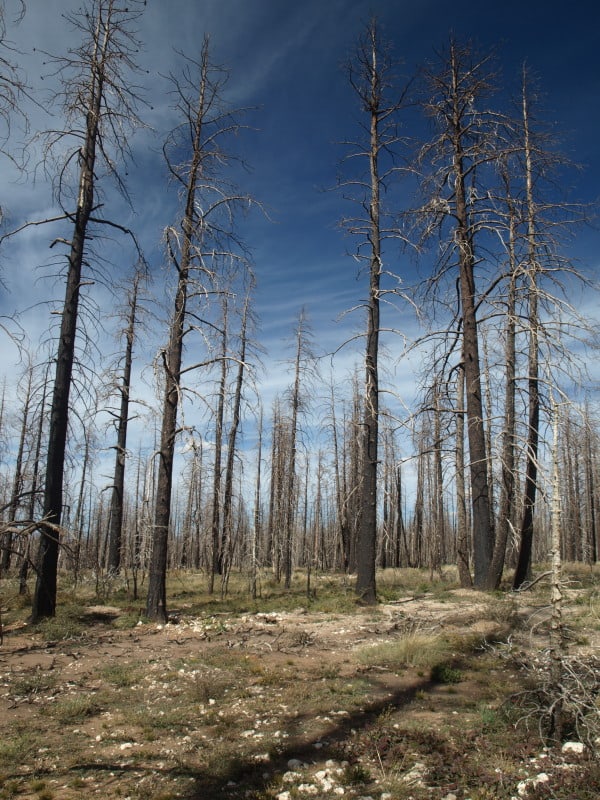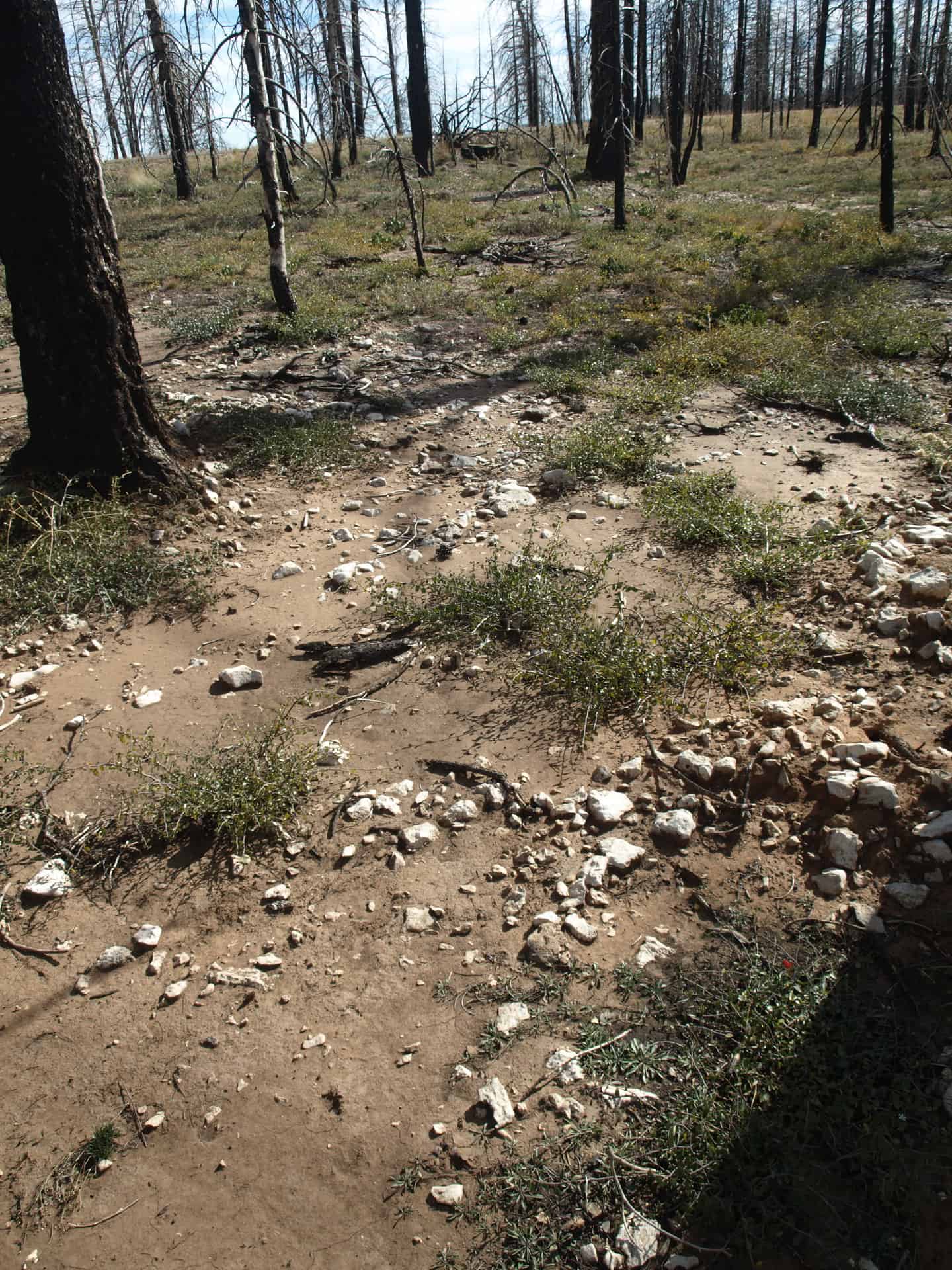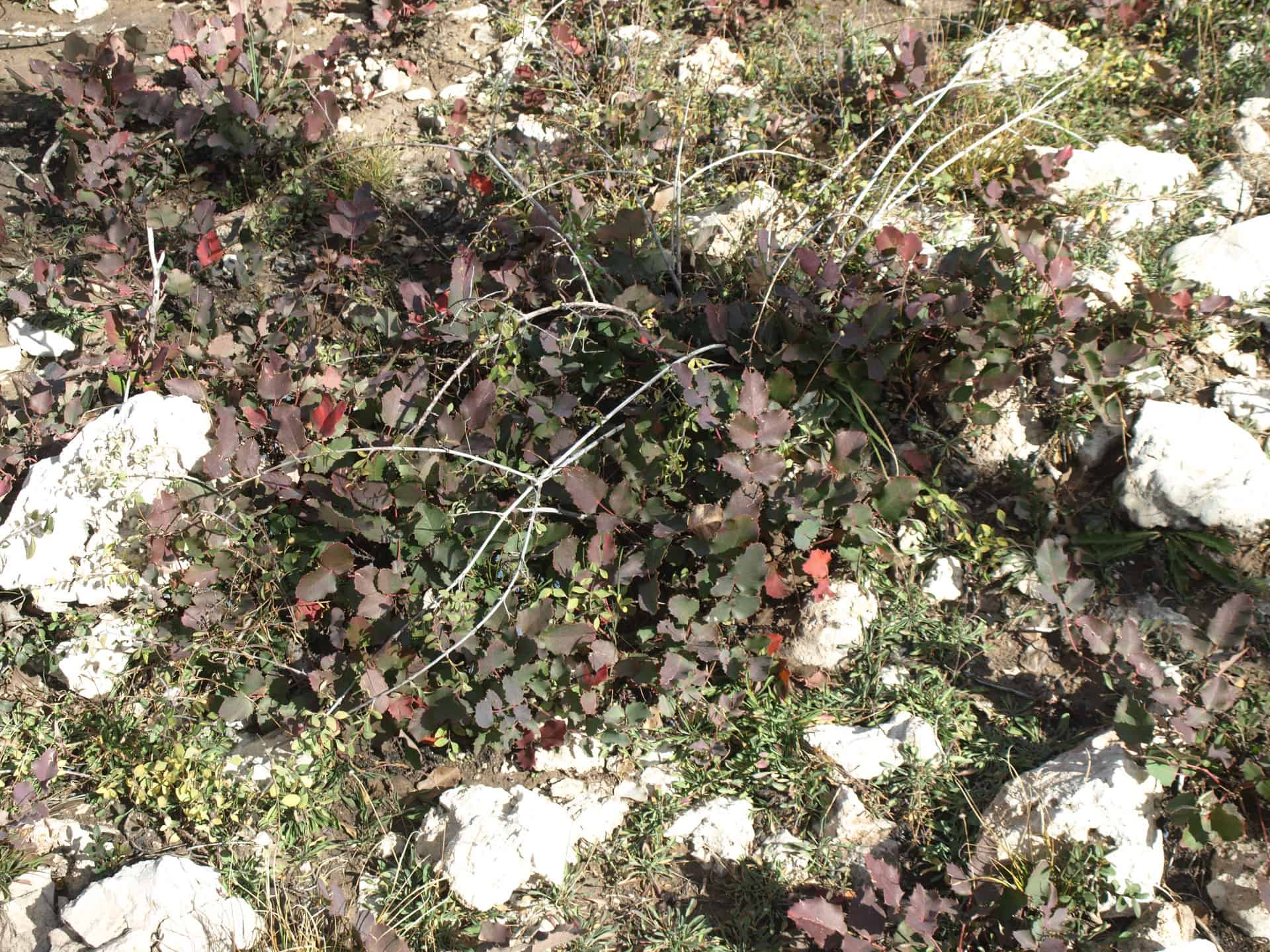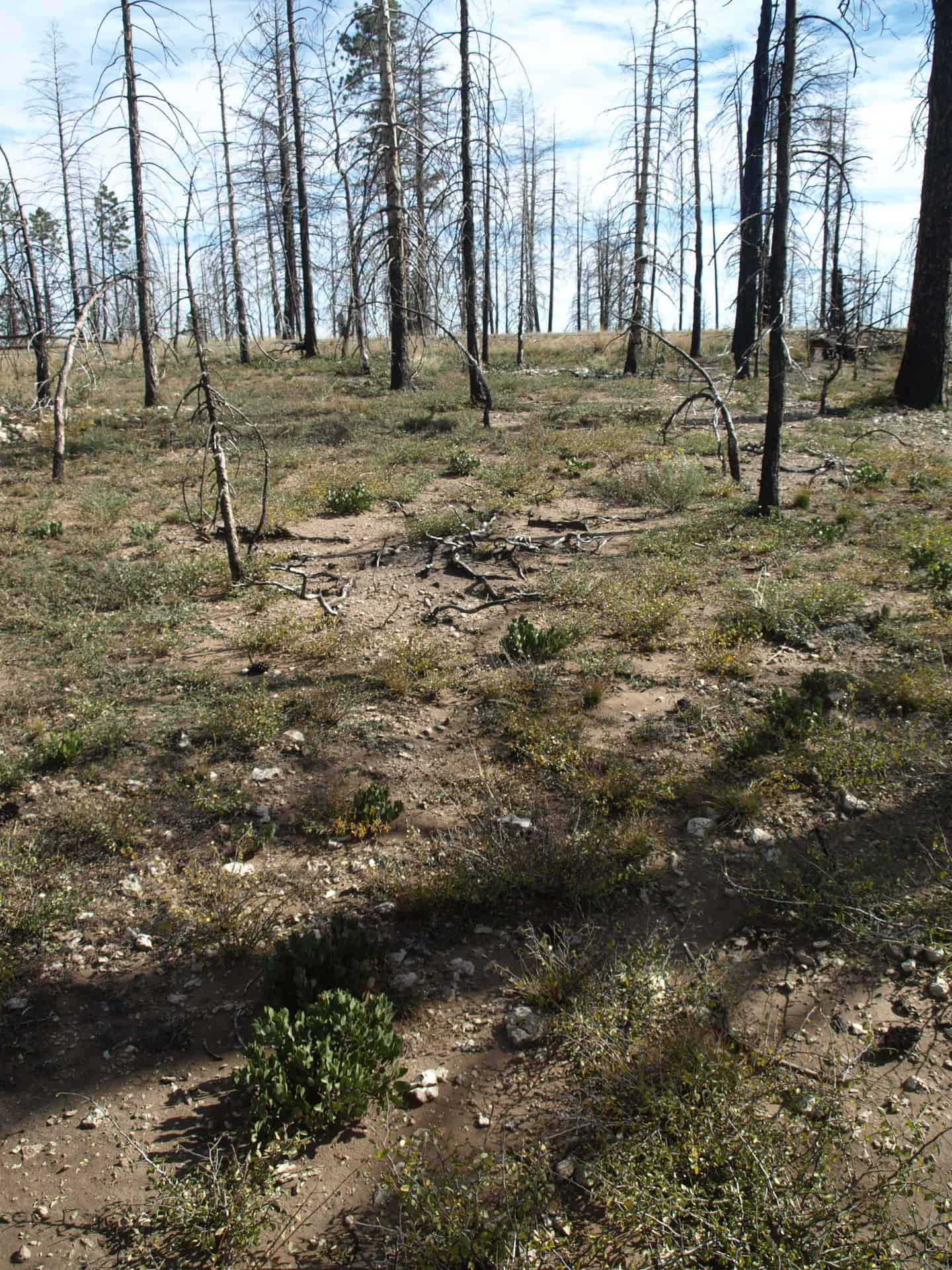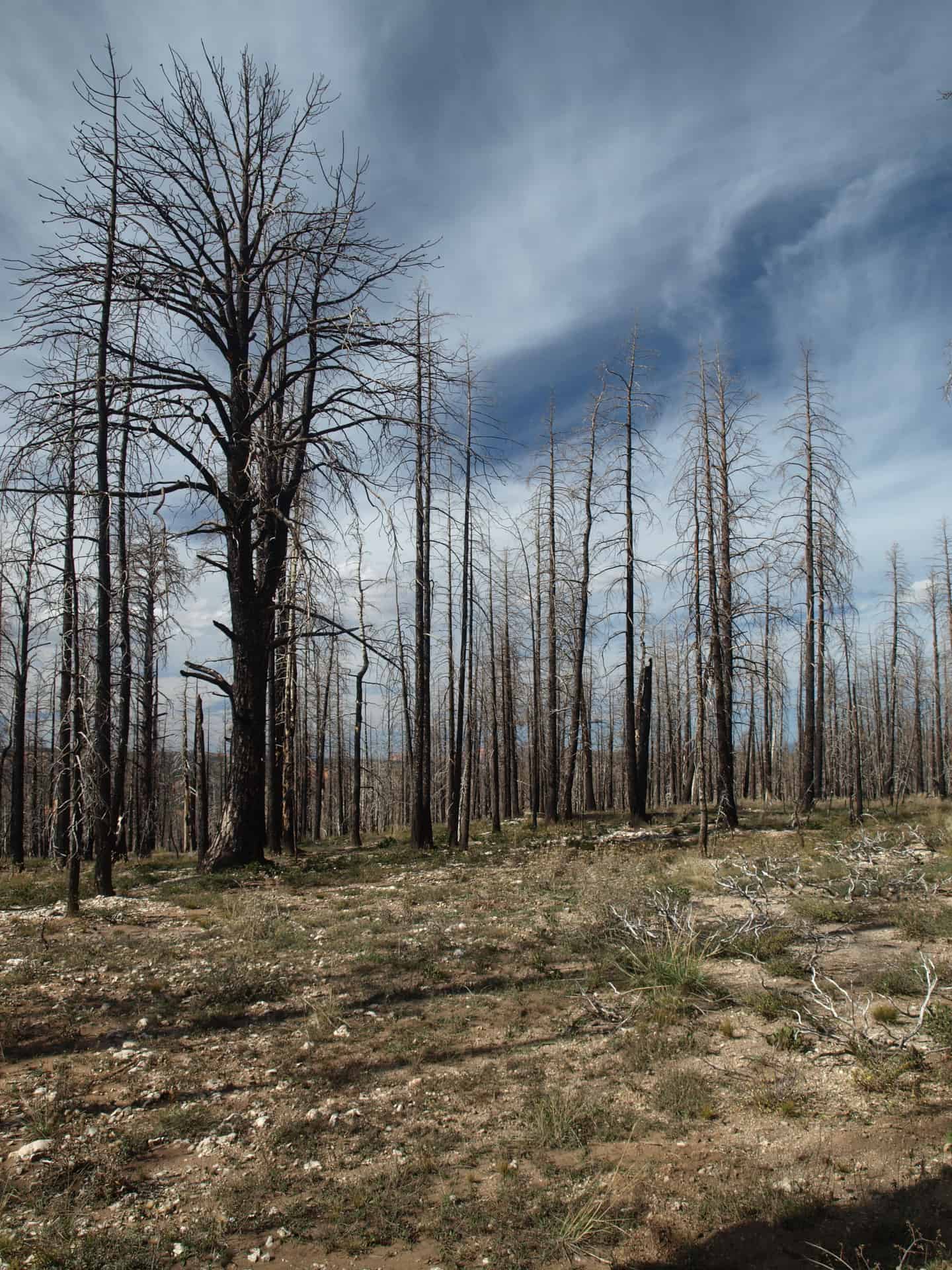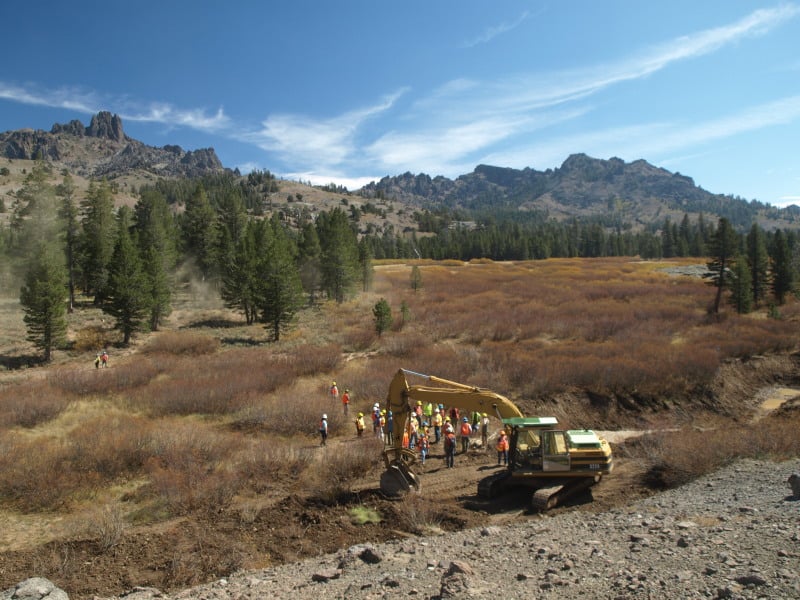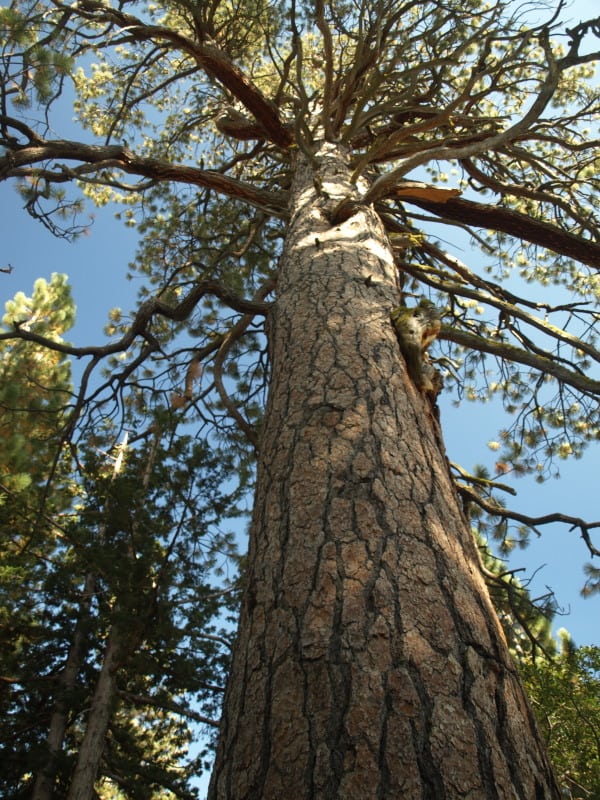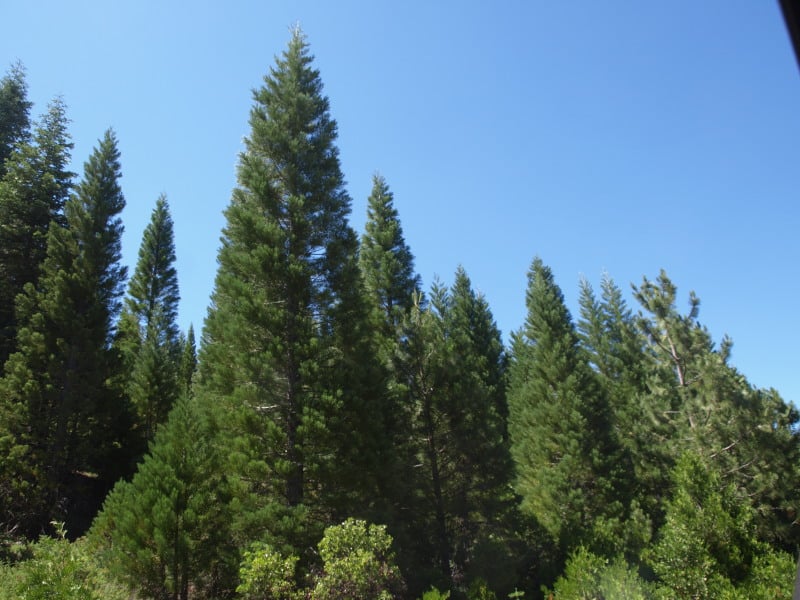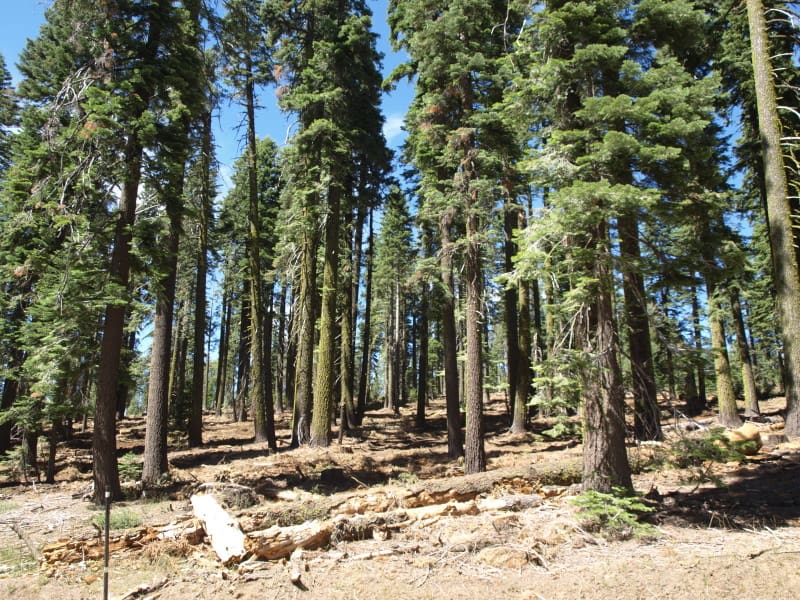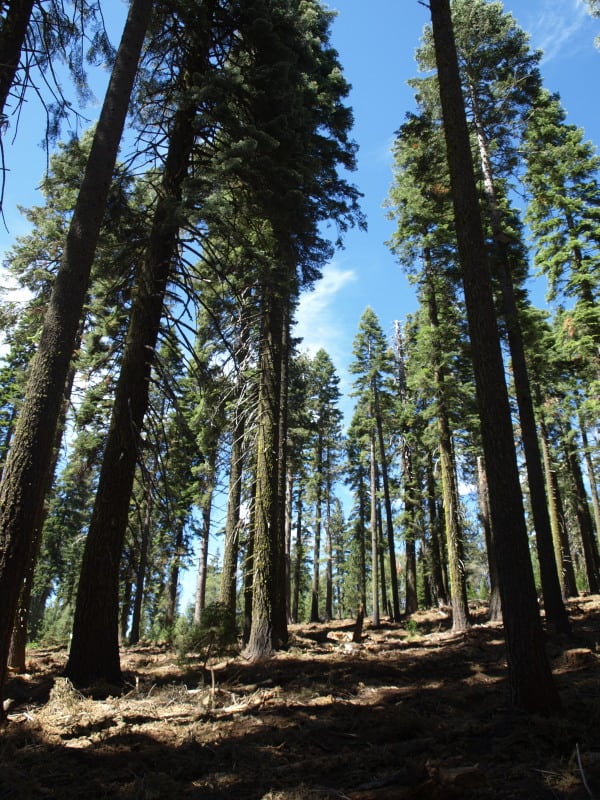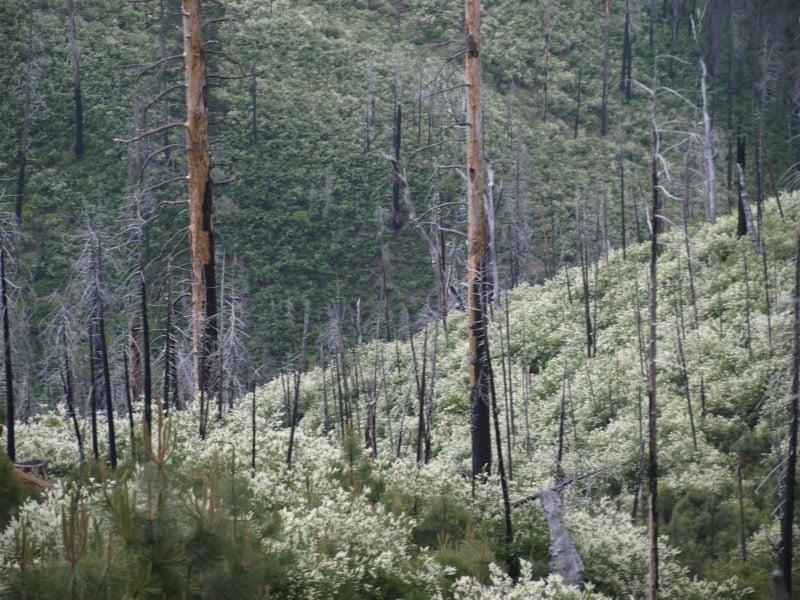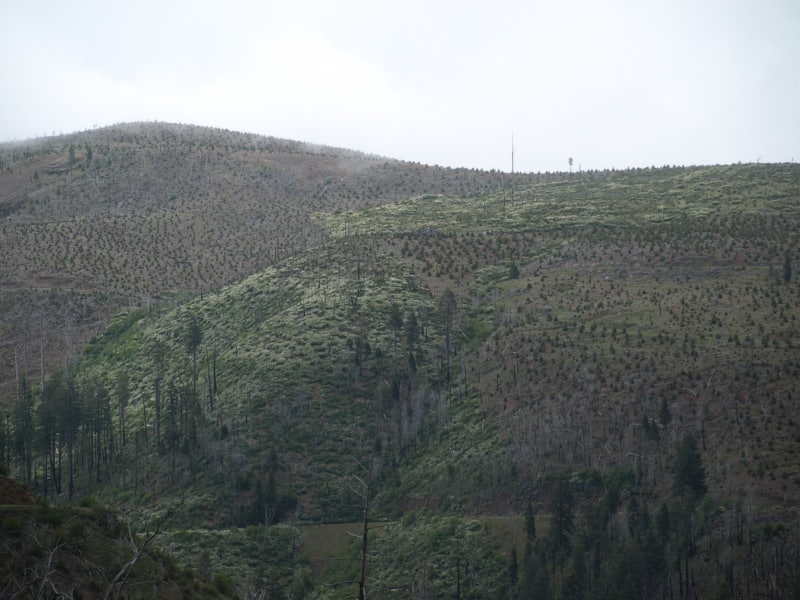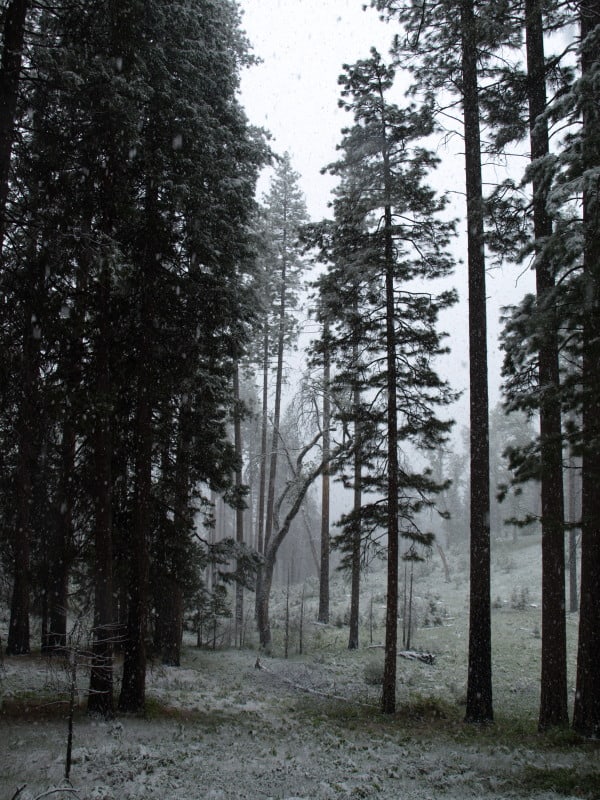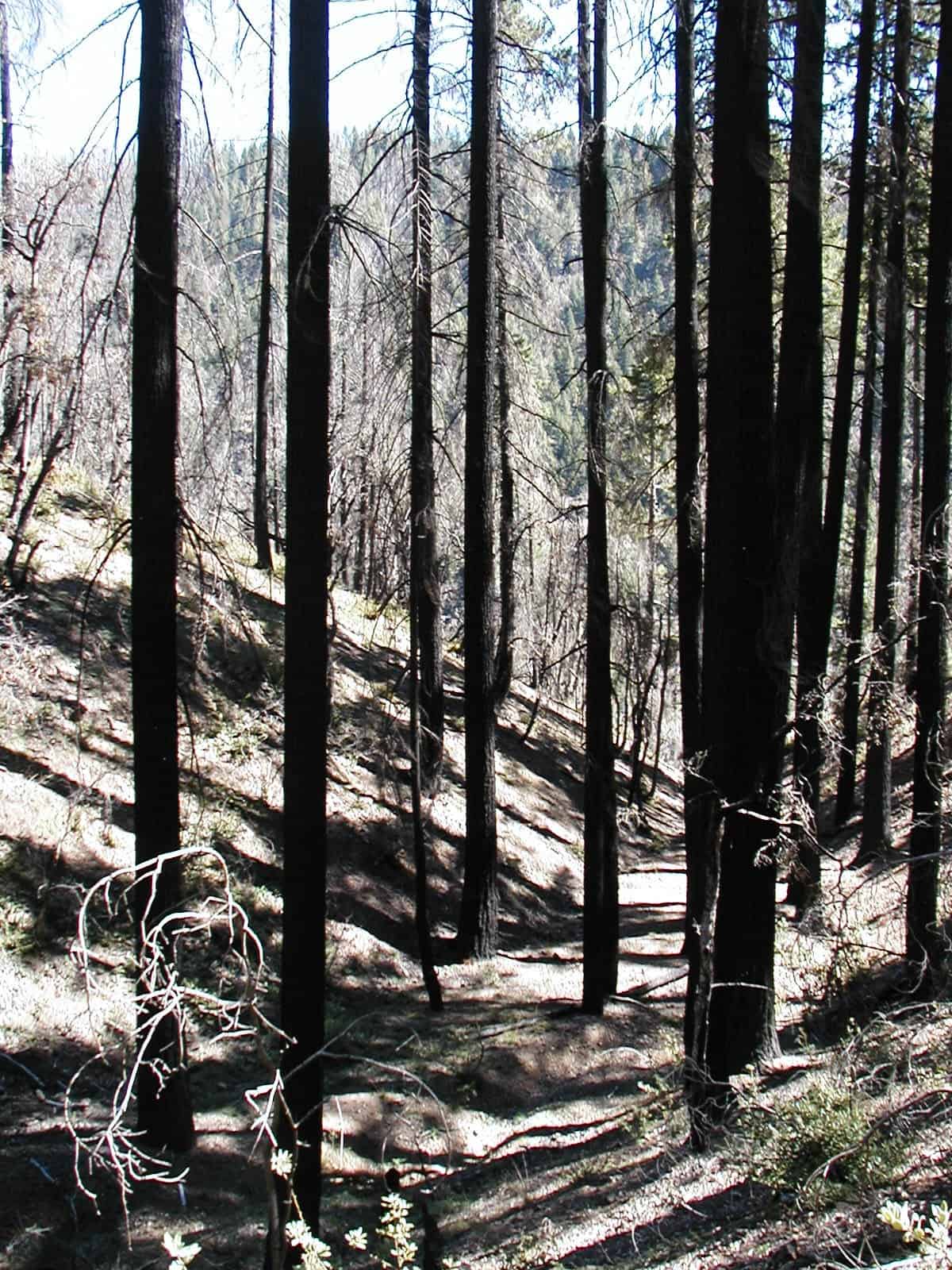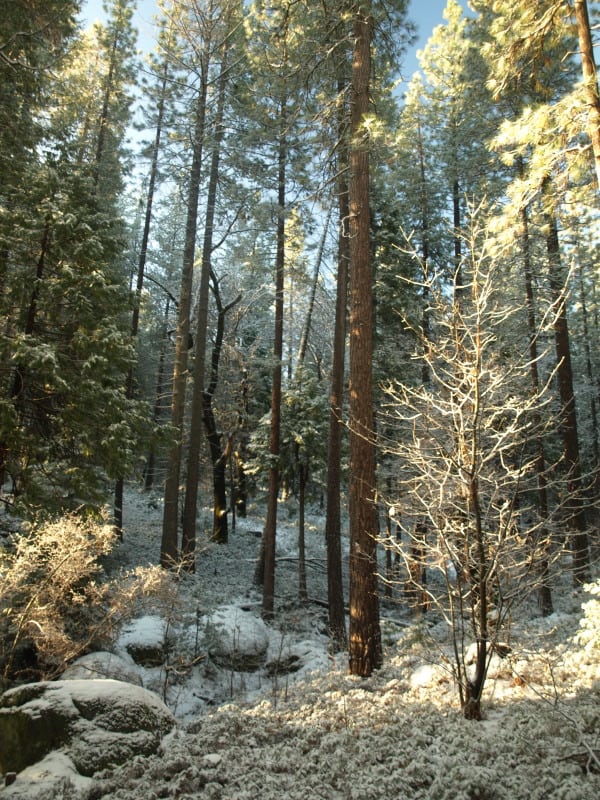The 2009 Bridge Fire was started by lightning, and burned in both the Dixie National Forest and Bryce Canyon National Park. Since the fire didn’t closely approach structures, the fire was allowed to burn to the road, and in some places, to the rim.
Mortality was pretty severe but, there were still some green trees scattered about. It is hard to say if there has been a good cone year, since the fire. I didn’t see a single live new tree in this particular area.
I did see this dwarf Oregon grape but, it really wasn’t a surprise, since I had seen them growing among the hoodoos.
I also saw some manzanita and ceanothus becoming re-established, along with other desert brush species.
As the years go on, the odds for having a pine forest soon are worsening. At 9000 feet in elevation, this is a pretty harsh environment for any tree. I posted most of these pictures in high resolution, so you can see the vegetation easily, if you click on them. You cannot judge pine regeneration after only a few years but, in this case, pine regeneration looks very poor.
To see the pictures from my Bryce Canyon and Zion National Park adventures, go see my Facebook page, please. These include the Peekaboo trail in Bryce Canyon, and “The Narrows” in Zion National Park.
